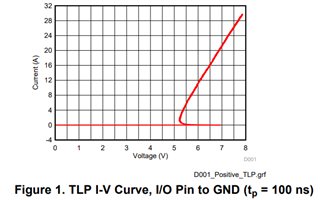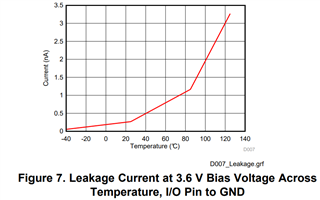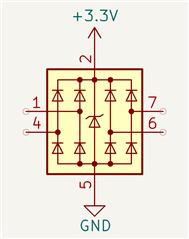Hi E2E,
I would like to ask for help selecting a protection diode for my circuit, consisting of 3 simplified configurations:
1. High impedance precision analog line - no significant leakage allowed
2. Digital signal line to a microcontroller's GPIO - resistor to limit current and increase protection
3. Power line - 3.3V VDD for the microcontroller - bypass cap, but no resistor to avoid dissipation and save power (battery operated device)
In all three scenarios:
- The operating voltage is 3.3V, with 3.9V being the absolute maximum rating
- I want to protect against ESD events as well as potential transient voltages that could peak as low as 4V (which is still above the max rating)
- For simplicity, let's assume all the signals are DC so I do not have a maximum capacitance requirement
Questions:
1. For the 1st scenario, I am thinking about using TPD4E1B06 due to its 0.5nA max leakage. Is it the best ultra-low-leakage choice, or would you recommend something else?
2. Regarding the 2nd and 3rd scenario, I have tried using the parametric search and found some candidates with VRWM of 3.6V, but I cannot find the clamp and breakdown voltage that would satisfy the requirement of protecting the circuit from surge as low as 4V, not allowing it to experience more than 3.9V, and having VHOLD above VRWM. Could you please recommend an ESD or TVS diode that could possibly work for both configurations?
Thank you.
Best regards,
Stanley




